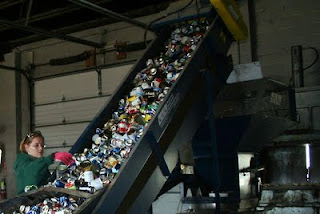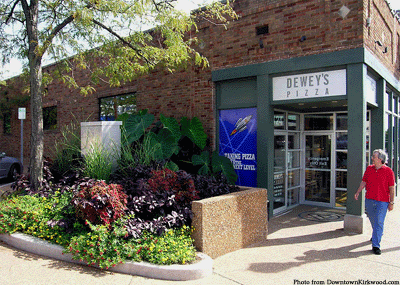 That statement begins the description of the American Institute of Steel Reclamation (AISR). Designed by Jeff Dahl and Jan Lim, AISR is an educational institute concept that is designed to be incorporated around a functioning scrap yard. Their unique design and idea was strong enough to win 1st place in the 2008-2009 Association of Collegiate Schools of Architecture (ACSA)/American Institute of Steel Construction (AISC) Steel Design Student Competition.
That statement begins the description of the American Institute of Steel Reclamation (AISR). Designed by Jeff Dahl and Jan Lim, AISR is an educational institute concept that is designed to be incorporated around a functioning scrap yard. Their unique design and idea was strong enough to win 1st place in the 2008-2009 Association of Collegiate Schools of Architecture (ACSA)/American Institute of Steel Construction (AISC) Steel Design Student Competition.
“The initial concept came after visiting the local scrap yard and being instantly fascinated by the processes simultaneously occurring there,” explained Jeff. “From the initial intake of vehicles, to their dismantling and removal of contaminated parts, all the way through the crushing of vehicles to be used as input feed for new steel. Standing on site and watching all the complexities co-exist was intriguing, as well as something that I knew many people have not seen before. That is why my design partner Jan Lim and I decided to program our project around an educational institute.”
Jeff is was most recently a Masters student at Columbia University in New York City with a Masters degree in Advanced Architectural Design but at the time of the design he was going for his Bachelors at Woodbury University School of Architecture in California. He eventually graduated Magna Cum Laude.

Describing the sleek design, Jeff describes his favorite part being the curve in the building that focuses from inside the building towards a vehicle crusher.
“The boomerang shape really highlights the machinery and technical beauty of a scrap yard, educating visiting in a first-person experience rather than pictures in a book or on a computer screen.”
First-hand educating the public, according to Jeff, is one of the best ways to change negative connotations about steel and auto recycling industries.
“I would recommend [people] go out and look at steel for themselves. Look at the strength steel structured buildings in your city, the functionality of shipping containers floating by on cargo ships or on the back of semi-trucks, and look at those trucks themselves to see the flexibility in steel as a design material.”
“For most people, hearing the terms auto recycling sparks a visual in their heads of dirty oil, bent metal, and piles of ‘junk,’” Jeff continued. “In reality though, it’s a beautiful process exemplifying the life cycle of a material and its ability to be rebuilt (or upcycled) into something new.”
“We are all told as kids to not judge a book by its cover, but the reality is, we all judge by first impressions rather than educating ourselves deeper on the subject matter. This is why we decided on the institutional aspect of our project, giving visitors the chance  to see the processes and make an informed opinion about steel recycling for themselves.”
to see the processes and make an informed opinion about steel recycling for themselves.”
“There is always the library, the internet, or a local chapter of a steel organization, but just like the concept of my design, getting out and seeing steel in action first-hand is the best way. Seriously go to your local auto scrap yard, even if you know nothing about cars and don’t want to buy anything. Walk around, explore the space, and absorb yourself within the steel. Today it may be a 10 year old car, but 1 week from now it can be the steel structure for a new school. This is a truly amazing process.”
As a designer, Jeff praises steel highly as a material of choice.
“Steel is an especially important material in California, where this project what designed, because of its physical strength and ability to withstand the rumbling of earthquakes. The shear ability to span great distances and elevate a building with ease is what makes our design so successful, and it would not be possible (without greatly destroying the floating aesthetic we strived for) with any material but steel. Steel is everywhere, and is actually a beautiful material with many useful characteristics allowing it to adapt to almost any situation. Steel is also beneficial because of its flexibility in terms of scale.”
“The more that I use and explore the inherent qualities of steel, the more I fall in love with it. Steel is an amazing material with extreme potential that has provided lots of opportunity in architecture and design. The skyscrapers of the world would not be possible without steel, and the shipping industry would be vastly different. Steel is ideal for pre-fabricated installations (the facade of our design is constructed using existing windshields and front windows of cars on a louver system to provide shading and opacity), allowing for a ‘plug-and-play’ architecture that gets installed quickly, efficiently, and safely.”
In addition to the design benefits of using steel, Jeff maintains the environmental impact of steel is just as important in material selection.
“I care deeply about the future of our planet,” Jeff says. “The steel industry is ripe with sustainable opportunities, especially with steels ability to be recycled into new materials after its initial intended life. It can be used for anything you imagine. The negative connotation typically associated with the recycling or scrapping of cars is no longer valid, and if society continues to believe that scrap yards are dirty, grungy places, sustainability will never succeed.”
To see more of Jeff’s designs, visit his personal website. For more images of AISR specifically, visit here.
To view the most recent winners of the AISC Steel Design Student Competition, visit their website.


 That statement begins the description of the American Institute of Steel Reclamation (AISR). Designed by Jeff Dahl and Jan Lim, AISR is an educational institute concept that is designed to be incorporated around a functioning scrap yard. Their unique design and idea was strong enough to win 1st place in the 2008-2009 Association of Collegiate Schools of Architecture (ACSA)/American Institute of Steel Construction (AISC) Steel Design Student Competition.
That statement begins the description of the American Institute of Steel Reclamation (AISR). Designed by Jeff Dahl and Jan Lim, AISR is an educational institute concept that is designed to be incorporated around a functioning scrap yard. Their unique design and idea was strong enough to win 1st place in the 2008-2009 Association of Collegiate Schools of Architecture (ACSA)/American Institute of Steel Construction (AISC) Steel Design Student Competition.




 Opposition to curbside recycling usually presents the argument of unnecessary cost as their primary reason. With looming economic questions, how can a community afford to begin a new program when there are so few funds to go around? In
Opposition to curbside recycling usually presents the argument of unnecessary cost as their primary reason. With looming economic questions, how can a community afford to begin a new program when there are so few funds to go around? In  This appliance recycling agreement will keep valuable steel from becoming landfill waste. This announcement teams along side the U.S. Environmental Protection Agency (EPA)’s Responsible Appliance Disposal (RAD) program to responsibly dispose of refrigerators and other appliances by diverting them from landfills and into the recycling process.
This appliance recycling agreement will keep valuable steel from becoming landfill waste. This announcement teams along side the U.S. Environmental Protection Agency (EPA)’s Responsible Appliance Disposal (RAD) program to responsibly dispose of refrigerators and other appliances by diverting them from landfills and into the recycling process.